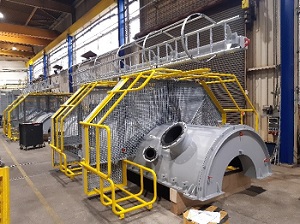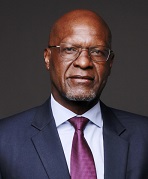
Daures Green Hydrogen Village launched – Produced hydrogen, green ammonia to be used for local consumption on the project site

The Daures Green Hydrogen Consortium launched the Daures Green Hydrogen Village (DGHV) last week on Friday, as a move that will realise the production of green hydrogen and ammonia plus the utilisation of its derivatives.
The Village will produce 31 tons of hydrogen and 109 tons of ammonia per year in phase 1 using 0,99MW of renewable energy in phase 1. Accordingly, phase 1 will also see the production of 500 tons of tomatoes and 600 tons of carrots.
The consortium revealed that this will be Namibia’s first carbon-free agriculture producer. The project will create over 70 sustainable jobs in phase 1 and over 100 temporary jobs during construction.
“The Village will realise Namibia’s first batch of green hydrogen and green ammonia which will be used for local consumption on the project site. The green hydrogen and ammonia will be used to power the facility through fuel cells and research activities on the project,” announced the consortium, at the launch event.
According to the consortium, phase 1 groundbreaking will commence in March 2023 and will include an official groundbreaking ceremony. They added that phase 4 of the project will result in the production of 352,000 tons of green ammonia using 1GW worth of renewable energy and a 420MW electrolyzer. As a result, phase 4 will provide over 1,000 sustainable green jobs.
“Research activities will be conducted through collaboration with the University of Namibia and University of Stuttgart and will provide internship and training opportunities to students as Namibia seeks to develop skills and capacity in the industry.”
Speaking at the launch, DGHV Chief Executive, Jerome Namaseb said: “These agreements provide a key opportunity for further collaboration for the hydrogen industry with other existing industries in the project area. We are very excited to work with these firms on identifying opportunities and making a reality of them.”
The Consortium signed memorandums of understanding (MOUs) on corporate social responsibility initiatives, on the offtake of up to 40,000 tons of green ammonia, and the provision of water in the area for subsequent phases, respectively. The entities that have signed the MOUs include the Rossing Foundation, Sable Chemical Industries Limited, and Afritin Mining, which operates the Uis Tin Mine.
The Village is committed to reducing the dependency on carbon-based fuels while providing sustainable green employment to people from the Daures Constituency and Namibia as a whole.
In addition, the MoU with the Rossing Foundation will see collaboration between the entities on corporate social responsibility initiatives such as training of Namibians at the Village, scholarships for Namibians, and community development programs in the Daures Constituency.
Namaseb also noted that the Village will be Africa’s first net zero Village that will evidence the production of green hydrogen. “As for the project phasing, the pilot phase 1 is scheduled for 2022/23, while phase 2 is scheduled for 2023/24. Further, phase 3 is slated for 2026/28, and finally, phase 4 is scheduled for 2029/32.”













































